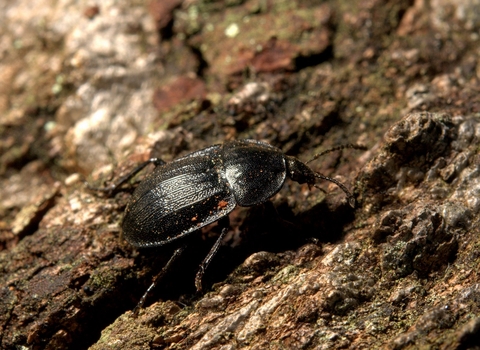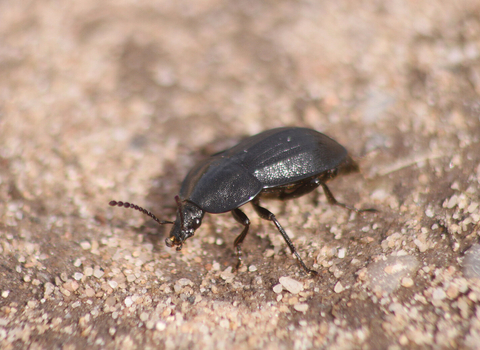
Black snail beetle © Brian Eversham

Black snail beetle © Tom Hibbert

Black snail beetle feeding © John Bridges
Black snail beetle
This shiny beetle is common in wooded areas throughout the UK. As the name suggests, it specialises in hunting snails.
Enw gwyddonol
Phosphuga atrataPryd i'w gweld
All yearTop facts
Ynghylch
The black snail beetle, also known as the black carrion beetle, is one of our most common carrion beetles. It can be found right across the UK, from the southern tip of Cornwall to the Scottish islands. Black snail beetles live in a wide variety of habitats, from coastal dunes to peat bogs, but especially wooded areas. You can also find them in gardens. The adult beetles live for several years, spending the winter under bark, logs or other woody debris, or in plant litter or similarly sheltered spots. When they're resting they often tuck their head under their body. If they're disturbed, they can secrete a nasty smelling yellow liquid as a form of defence.Black snail beetles become more active in spring. They are nocturnal and tend to hide away during the day, in similar spots to where they spend the winter. They can't fly, but are often found wandering along paths or over logs.
As its common name suggests, this beetle is a specialist at hunting snails. It bites the snail and secretes a substance from its mouth that dissolves the snail's tissue, as well as the defensive mucus that snails use to protect themselves. The beetle then feeds on the liquefied snail. As it feeds, it gradually pushes its head deeper into the shell to reach more of the snail. In some cases they can almost completely disappear inside the shell.
